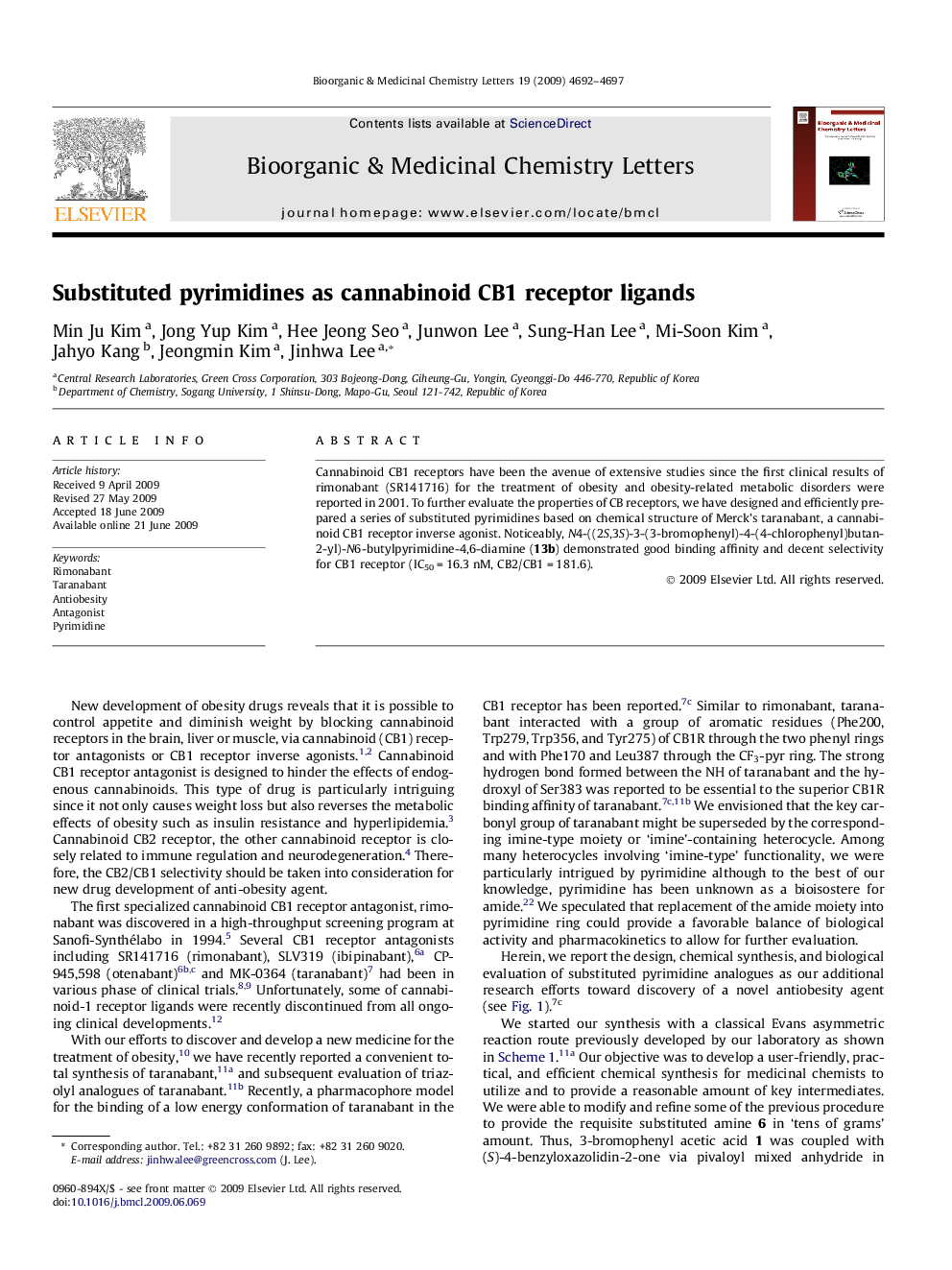| Article ID | Journal | Published Year | Pages | File Type |
|---|---|---|---|---|
| 1373306 | Bioorganic & Medicinal Chemistry Letters | 2009 | 6 Pages |
Cannabinoid CB1 receptors have been the avenue of extensive studies since the first clinical results of rimonabant (SR141716) for the treatment of obesity and obesity-related metabolic disorders were reported in 2001. To further evaluate the properties of CB receptors, we have designed and efficiently prepared a series of substituted pyrimidines based on chemical structure of Merck’s taranabant, a cannabinoid CB1 receptor inverse agonist. Noticeably, N4-((2S,3S)-3-(3-bromophenyl)-4-(4-chlorophenyl)butan-2-yl)-N6-butylpyrimidine-4,6-diamine (13b) demonstrated good binding affinity and decent selectivity for CB1 receptor (IC50 = 16.3 nM, CB2/CB1 = 181.6).
Graphical abstractWe have identified novel substituted pyrimidine series of small molecule cannabinoid-1 ligands that exhibited decent CB1 receptor binding affinities. Among various analogues, N-butylaminopyrimidine (13b) demonstrated favorable binding affinity for CB1 receptor.Figure optionsDownload full-size imageDownload as PowerPoint slide
